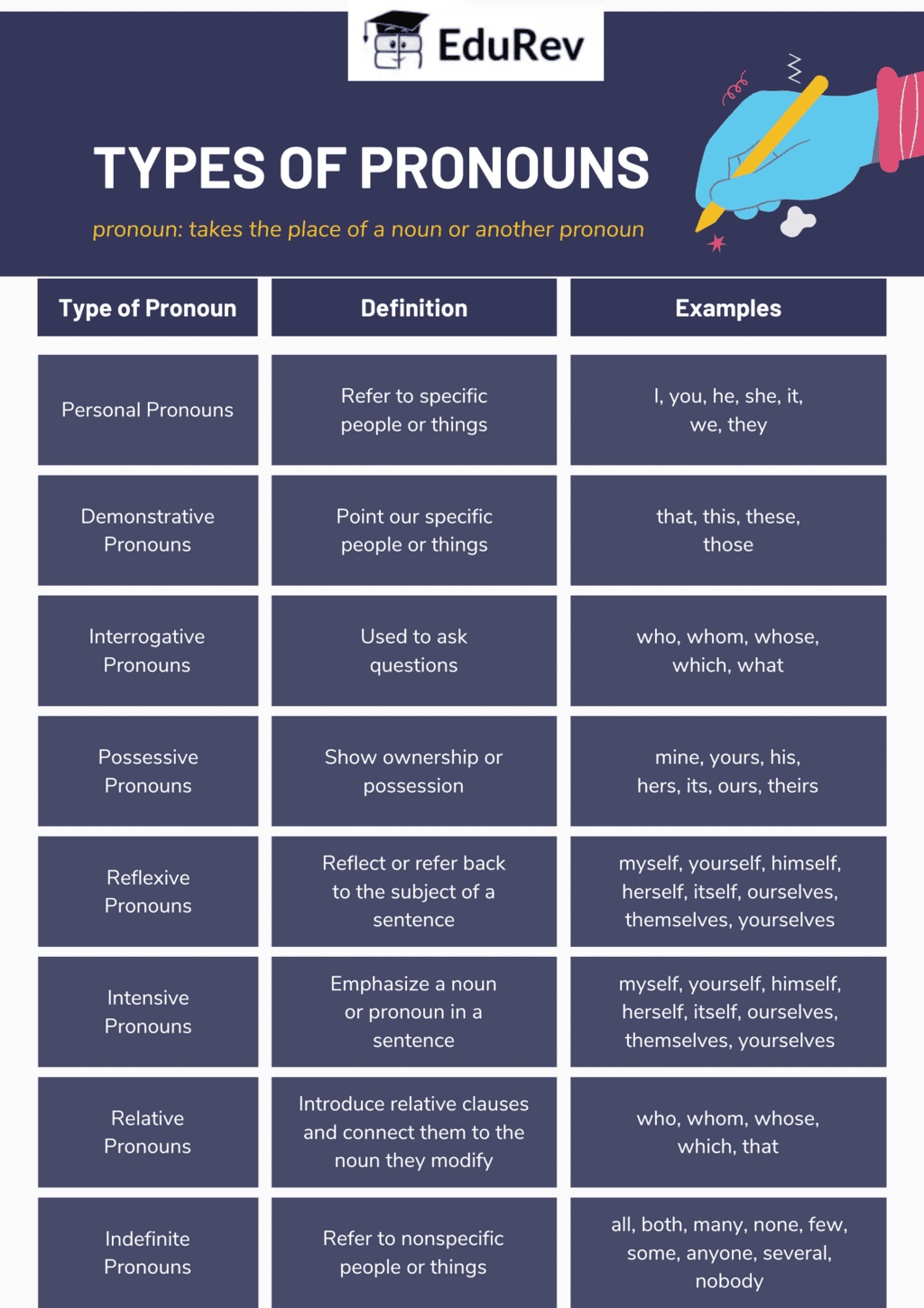CLAT Exam > CLAT Notes > English for CLAT > Poster: Pronouns and its kinds
Poster: Pronouns and its kinds | English for CLAT PDF Download

The document Poster: Pronouns and its kinds | English for CLAT is a part of the CLAT Course English for CLAT.
All you need of CLAT at this link: CLAT
|
57 videos|197 docs|95 tests
|
FAQs on Poster: Pronouns and its kinds - English for CLAT
| 1. What are pronouns and why are they important in English grammar? |  |
Ans. Pronouns are words that replace nouns in a sentence, helping to avoid repetition and making sentences clearer and more concise. They are important in English grammar because they help maintain the flow of writing and speech by allowing us to refer to people or things without constantly repeating their names.
| 2. What are the different kinds of pronouns? |  |
Ans. There are several kinds of pronouns in English, including personal pronouns (e.g., I, you, he, she, it, we, they), possessive pronouns (e.g., mine, yours, hers, theirs), reflexive pronouns (e.g., myself, yourself, themselves), relative pronouns (e.g., who, whom, whose, which, that), and demonstrative pronouns (e.g., this, that, these, those). Each type serves a specific function in a sentence.
| 3. How do personal pronouns differ from possessive pronouns? |  |
Ans. Personal pronouns are used to refer to specific people or things and can function as the subject or object of a sentence (e.g., "She is reading"). Possessive pronouns indicate ownership or possession and replace noun phrases (e.g., "That book is mine"). While personal pronouns focus on the subject or object, possessive pronouns emphasize ownership.
| 4. Can you provide examples of reflexive pronouns in sentences? |  |
Ans. Yes, reflexive pronouns are used when the subject and the object of a sentence are the same. For example, "I taught myself how to play the guitar" and "She looked at herself in the mirror." In these sentences, the reflexive pronouns (myself, herself) refer back to the subjects (I, she).
| 5. How do relative pronouns function in a sentence? |  |
Ans. Relative pronouns connect clauses or phrases to nouns or pronouns and provide additional information about them. For example, in the sentence "The book that I borrowed was interesting," the relative pronoun "that" introduces the clause "that I borrowed," giving more context about the noun "book."
Related Searches
















